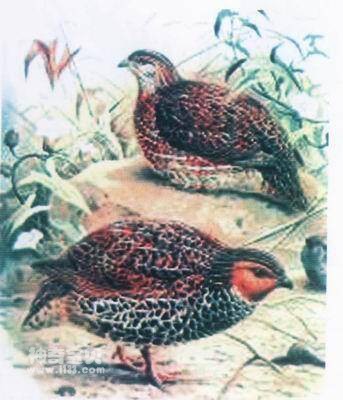Coturnix novaezelandiae
IUCN
LCBasic Information
Scientific classification
- name:Coturnix novaezelandiae
- Scientific Name:Coturnix novaezelandiae,New Zealand Quail
- Outline:Landfowl
- Family:Chickeniformes P.family Q.Genus
Vital signs
- length:No textual research information is available
- Weight:No textual research information is available
- lifetime:No textual research information is available
Feature
extinct
Distribution and Habitat
It is found in New Zealand and usually prefers to hide in the countryside.
Appearance
The wings are long and pointed; The first primary feather is the longest, or almost the same length as the second. The axillary feathers are long and white. Soft tail feathers, counted 10-12, covered by the tail cover; The tail is less than half the length of the wings. The mouth is small and slender. The tarsus is strong but not very long, equal in length to the middle toe and claw; There is no distance. Males and females usually differ slightly in plumage.
Details
New Zealand quail Coturnix novaezelandiae (New Zealand Quail), little is known about New Zealand Quail, only from a person named Buhler collected a painting of New Zealand quail to imagine their posture, and from the habits of brown quail to guess the daily life of New Zealand quail: They usually like to hide in the countryside, when disturbed, they will vigorously flap their wings to fly, and when they find a suitable place to fall, they will hide in a hurry, mainly on insects, seeds and some grass. They prefer plant food, their nests are usually built in the grass in the more hidden places, the female bird lays the eggs and incubates on her own, it takes about three weeks for the chicks to hatch, during the incubation period, the male is responsible for guarding the nest, when there is danger approaching the nest, the male bird will scream alarm, and that is all that is known.

The first European colonists in New Zealand had the pleasure of shooting New Zealand quail at their prey. It is recorded that in 1848, Mr. D. Moeller and Colonel Richmond killed a total of 43 New Zealand quail in one day, and their hunting ground was Nelson City. It has been known that excessive hunting and widespread burning were the root causes of the sudden decline of the New Zealand quail within a year or two, and despite the subsequent policy of setting aside large areas of conservation to protect them, one thing is certain that no matter how hard they tried, the New Zealand quail became extinct around 1875.
Protect wild animals and eliminate wild meat.
Maintaining ecological balance is everyone's responsibility!








